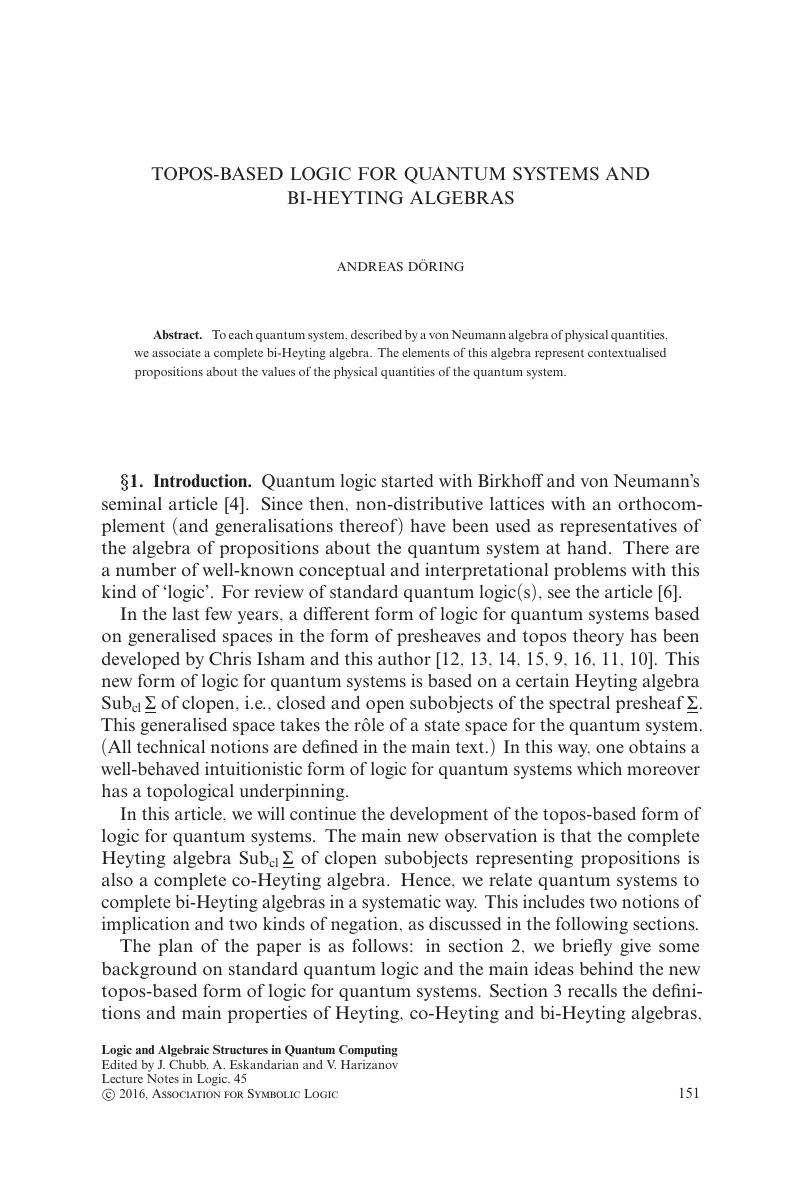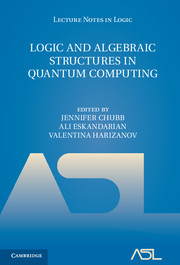Book contents
- Frontmatter
- Contents
- Preface
- Introduction
- 1 A (very) brief tour of quantum mechanics, computation, and category theory
- 2 Could logic be empirical? The Putnam-Kripke debate
- 3 The essence of quantum theory for computers
- 4 Fiber products of measures and quantum foundations
- 5 Operational theories and categorical quantum mechanics
- 6 Relating operator spaces via adjunctions
- 7 Topos-based logic for quantum systems and bi-Heyting algebras
- 8 The logic of quantum mechanics – Take II
- 9 Reasoning about meaning in natural language with compact closed categories and Frobenius algebras
- 10 Knot logic and topological quantum computing with Majorana fermions
- Index
- References
7 - Topos-based logic for quantum systems and bi-Heyting algebras
Published online by Cambridge University Press: 05 June 2016
- Frontmatter
- Contents
- Preface
- Introduction
- 1 A (very) brief tour of quantum mechanics, computation, and category theory
- 2 Could logic be empirical? The Putnam-Kripke debate
- 3 The essence of quantum theory for computers
- 4 Fiber products of measures and quantum foundations
- 5 Operational theories and categorical quantum mechanics
- 6 Relating operator spaces via adjunctions
- 7 Topos-based logic for quantum systems and bi-Heyting algebras
- 8 The logic of quantum mechanics – Take II
- 9 Reasoning about meaning in natural language with compact closed categories and Frobenius algebras
- 10 Knot logic and topological quantum computing with Majorana fermions
- Index
- References
Summary

- Type
- Chapter
- Information
- Logic and Algebraic Structures in Quantum Computing , pp. 151 - 173Publisher: Cambridge University PressPrint publication year: 2016
References
- 3
- Cited by



